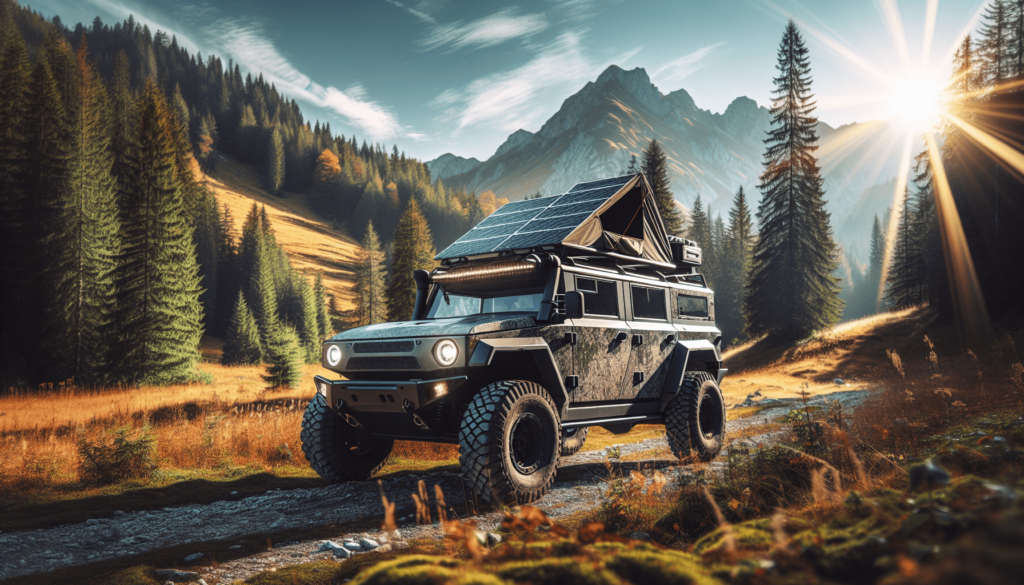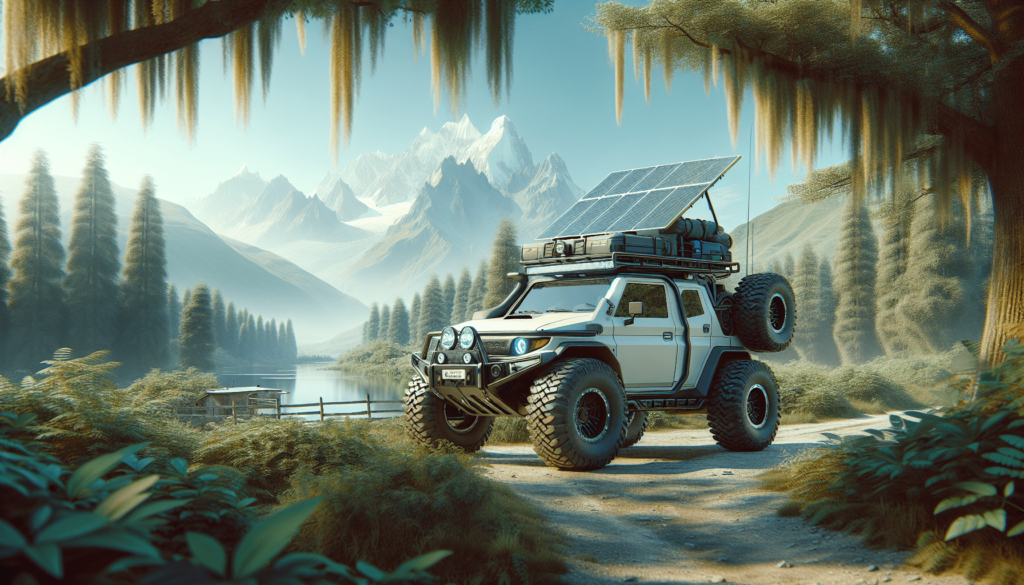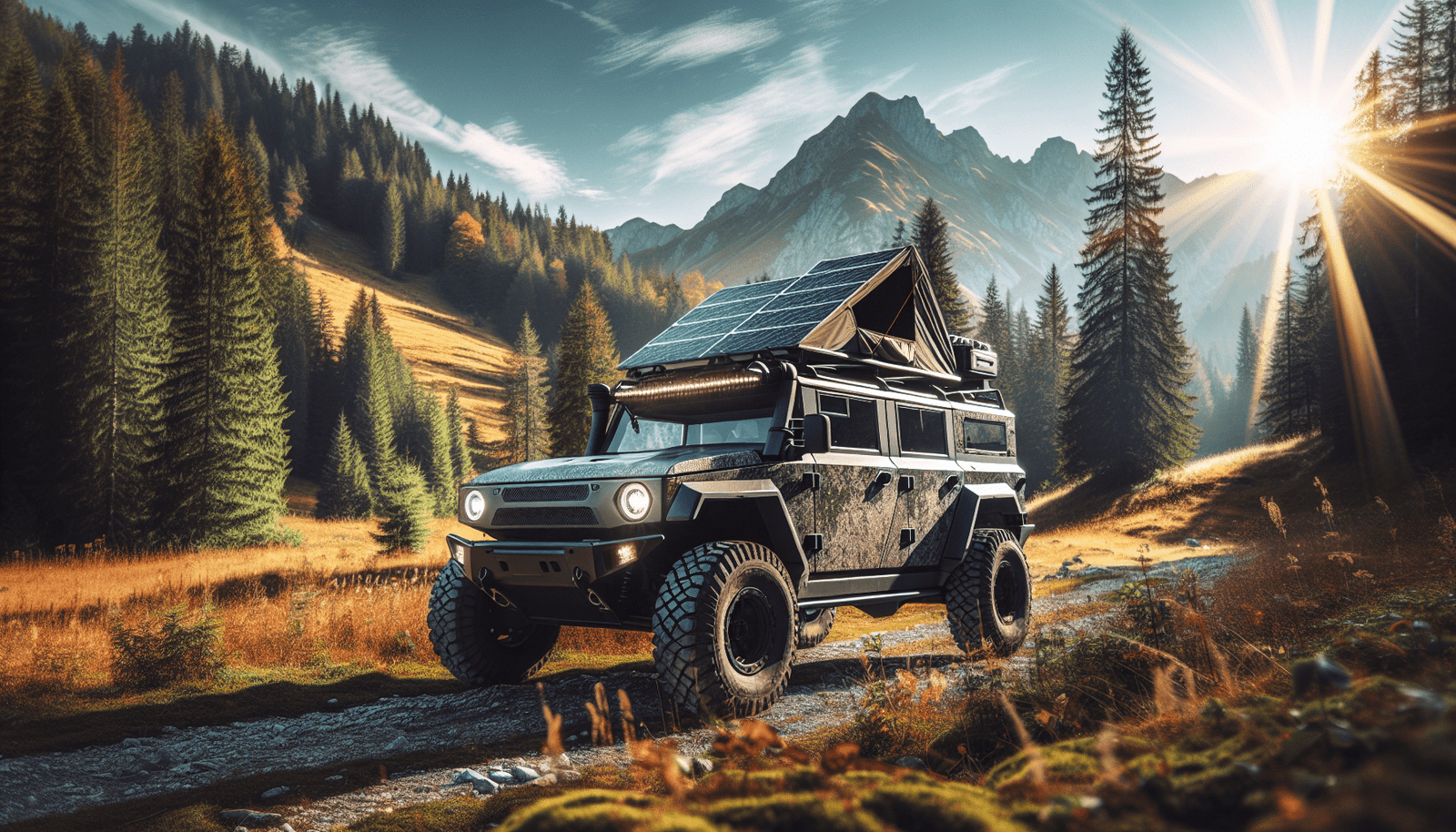Have you ever thought about how electric vehicles are changing the landscape of overlanding? With the growing popularity of electric vehicles (EVs), many people are pondering how this innovative technology is affecting their adventures in the great outdoors. Overlanding, which involves self-sufficient travel to remote destinations, has traditionally been associated with rugged gasoline or diesel vehicles. However, as advancements in EV technology continue to unfold, it’s essential to understand what this means for overland enthusiasts like you.

The Rise of Electric Vehicles in Overlanding
Electric vehicles have evolved significantly over the past decade. Initially seen as an alternative for city driving, they are now making their mark in off-road and remote travel scenarios. Major manufacturers have begun to recognize the potential of electric powertrains in vehicles designed for durability and extended travel.
Improved Battery Technology
One of the key advancements in electric vehicles is the improvement in battery technologies. The capacity and efficiency of batteries have increased dramatically, allowing for longer driving ranges. Most modern electric vehicles (EVs) can now achieve ranges that are comparable to traditional fuel-powered vehicles, which directly impacts the feasibility of long-distance overland travel.
- Lithium-ion Technology: The transition from lead-acid to lithium-ion batteries has been crucial. These batteries are lighter, have higher energy density, and last longer, which is vital when you’re venturing into remote areas.
| Battery Type | Energy Density | Lifespan | Weight |
|---|---|---|---|
| Lead-acid | Low | 3-5 years | Heavy |
| Lithium-ion | High | 8-15 years | Light |
This improvement means you can travel further without needing to recharge as often.
Infrastructure Development
As the number of electric vehicles on the road increases, so does the need for charging infrastructure. In many areas, charging stations are becoming more prevalent, and for overlanding, this is crucial. The development of fast-charging stations along popular overlanding routes can offer peace of mind when you’re planning your adventure.
- Charging Stations: Many states and countries are increasingly investing in EV charging infrastructure, making it easier to charge while on the go. Look for networks like ChargePoint, Electrify America, and others that help map out your route.
Range Anxiety Reduction
Initially, one of the biggest hesitations around using EVs for overlanding was range anxiety—the fear of running out of battery power far from a charging station. However, as battery technology improves and infrastructure expands, this concern is being alleviated.
Overlanders can now plan longer trips with confidence, knowing there are more options for charging along their routes and that many EVs today feature battery management systems that optimize the energy used, helping to maximize range.
Adventures in Silence: The Environmental Benefits of EVs
One of the most significant advantages of using electric vehicles for overlanding is their lower environmental impact. As an adventurous spirit who cares about nature, this is one compelling reason to consider EVs for your next escapade.
Reduced Carbon Footprint
Electric vehicles produce zero tailpipe emissions. While it’s crucial to consider the emissions from electricity generation, particularly in regions reliant on fossil fuels, it still represents a significant improvement over traditional combustion engines. Over time, as renewable energy sources become more dominant, the overall carbon footprint of overlanding in an EV will continue to decrease.
Quieter Exploration
Another perk of electric overlanding is the reduced noise levels. Traditional vehicles can create a lot of sound pollution, disrupting wildlife and natural settings. You’ll find that the quiet operation of electric vehicles allows for a more immersive experience in nature. This can lead to better wildlife encounters and a more serene trekking experience.
Capable Electric Vehicles for Overlanding
While many traditional SUVs and trucks have powered the overlanding community, a new generation of electric vehicles is rising to the challenge. Certain models are designed with off-road capability and adventure in mind.
Tesla Cybertruck
A much-anticipated entry into the electric vehicle market, the Tesla Cybertruck promises durability, off-road capability, and impressive range. With features like adjustable air suspension and an impressive towing capacity, it fits perfectly into the overlanding genre.
Rivian R1T
Rivian is designed specifically for the adventurous driver. With its quad-motor setup, it offers exceptional off-road performance, and its built-in gear tunnel provides additional storage for your adventure necessities. With impressive range and rugged construction, it promises a thrilling overlanding experience.
Ford F-150 Lightning
Transforming a classic, the Ford F-150 Lightning leverages the popular F-150 brand with electric innovation. This truck is built for heavy-duty use while providing the benefits of electric power. Its extended range and built-in generator features make it an outstanding option for overland trips.
The Challenge of Charging While Overlanding
Despite the advantages of electric vehicles in the overlanding community, there are still challenges that you may face on your journeys. Understanding these can help you prepare better.
Charging Options
When planning your overland expedition, figuring out where you can recharge becomes essential. Many charging stations are concentrated in urban areas or along highways, which can be scarce in remote locations.
Types of Charging Solutions
| Charging Type | Level of Charge | Charging Location |
|---|---|---|
| Level 1 | 4-5 miles per hour | Home/Regular Outlets |
| Level 2 | 20-60 miles per hour | Public Stations |
| DC Fast Charging | 60-200 miles per hour | Highways/Popular Areas |
Level 1 charging is often impractical for overlanding, but Level 2 and DC fast charging can be helpful if planned accordingly.
Planning Your Route
When embarking on an overland journey with an EV, you need to account for charging stations, distances between them, and how much charge you need to reach your next destination. This means utilizing EV route planning apps that can inform you of the available charging stations along your journey.
- Apps to Consider: Apps like PlugShare and A Better Route Planner help you plot your path effectively, ensuring that you know where to stop and when to charge.

Off-grid Electric Overlanding
Many overlanders pride themselves on self-sufficiency. With electric vehicles, there are new ways to create an off-grid experience.
Solar Power Integration
Integrating solar power into your overlanding setup can enhance your electric vehicle experience. You might consider installing a portable solar panel system that can recharge your vehicle or provide power for camping gear. This lets you stay off-grid for longer without worrying about battery depletion.
- Benefits: Solar panels supplement energy sources and ensure you can stay charged up while enjoying the great outdoors longer.
Off-Grid Chargers
Some dedicated overlanders are now creating innovative solutions for charging their vehicles while off-grid. Options include portable generators and eco-friendly charging solutions that harness wind or solar energy to keep your EV powered.
The Community and Cultural Shift
As electric vehicles make their way into the overlanding community, a shift is happening. This change extends beyond the vehicles themselves and also reaches the culture of overlanding itself.
Emerging Trends
With the increase in electric vehicle adoption, you’ll likely notice an emerging trend towards eco-friendly camping and travel practices. Many enthusiasts are searching for more sustainable methods to enjoy their outdoor adventures, and EVs fit comfortably into this new mindset.
Sharing Knowledge and Resources
With this shift also comes a new need for community support. Many EV overlanders are eager to share their experiences and tips on how best to navigate the challenges and advantages of electric travel in the wilderness.
- Online Communities: Forums and social media groups focused on EV overlanding are sprouting up, allowing individuals to connect, share tips, and gather resources.
Future Trends in Overlanding
As electric vehicle technology continues to evolve, so too will the landscape of overlanding. Innovations are rapidly emerging that will create a better synergy between sustainable travel and the adventurous spirit inherent in overlanding.
Autonomous Overlanding
The technology behind autonomous vehicles is also being paired with electric vehicles, which could change overlanding as you know it. Imagine allowing your vehicle to handle driving tasks while you enjoy the scenery or plan your next camp automatically.
Enhanced Connectivity
New electric vehicles often come loaded with advanced technology for connectivity and navigation. Integrating smart technology into your overlanding vehicle can enhance your experience, assist with driving, and even help you to navigate through tough terrains using real-time data.
Conclusion: The Road Ahead
Fundamentally, electric vehicle technology is redefining what it means to go overlanding. With improvements in battery technology, charging infrastructure, and a growing awareness of environmental responsibility, many opportunities lie ahead for both seasoned overlanders and newcomers alike.
By considering how EVs may impact your adventures, you can begin envisioning new experiences and challenges. It’s an exciting time to be on the road, not just for those who love the adventure but also for those who crave sustainability without compromising on fun.
So, as you gear up for your next overland journey, think about how an electric vehicle might fit into your plans. You might find that the future of overlanding is not just electric; it’s also greener, quieter, and full of new possibilities.

